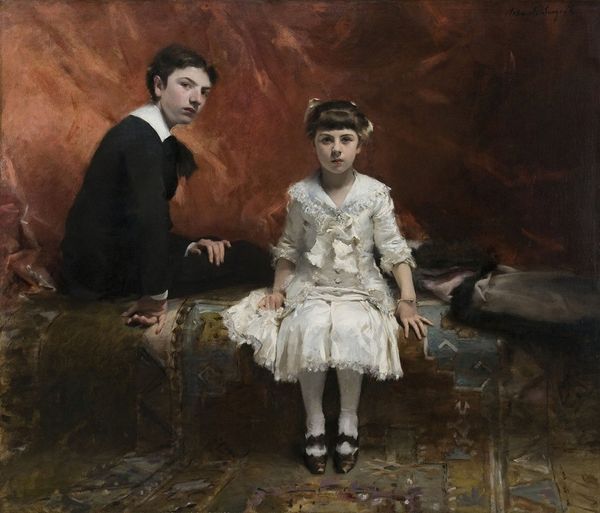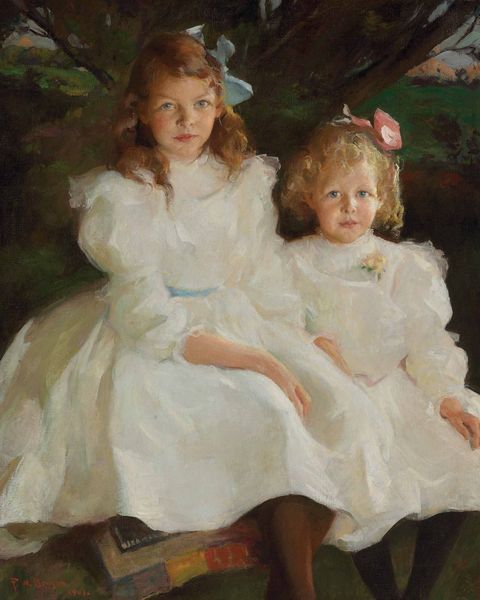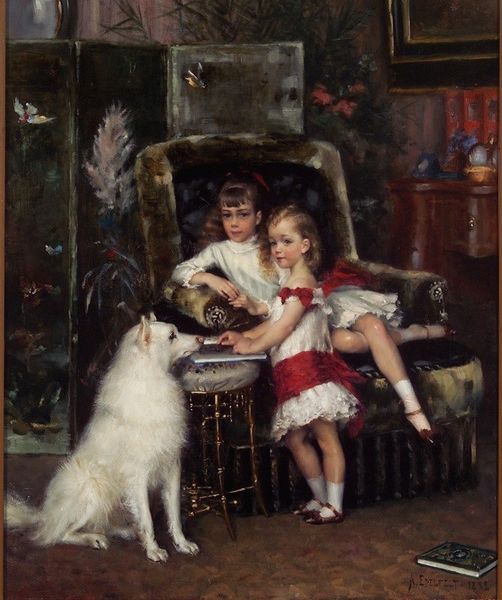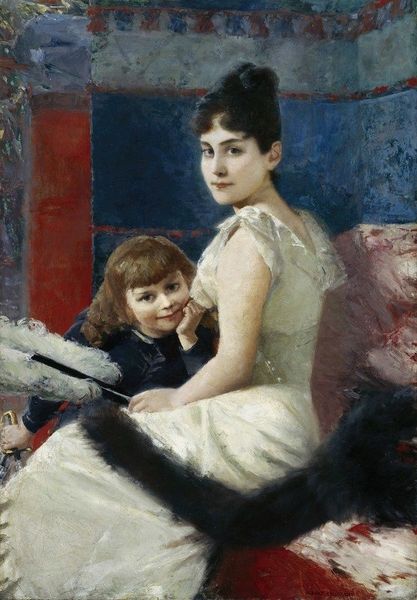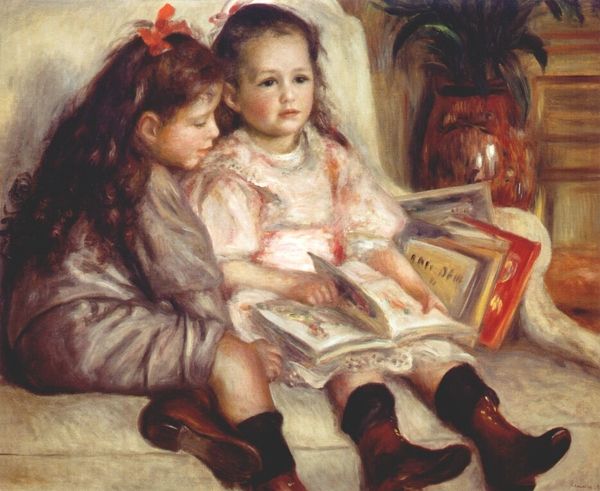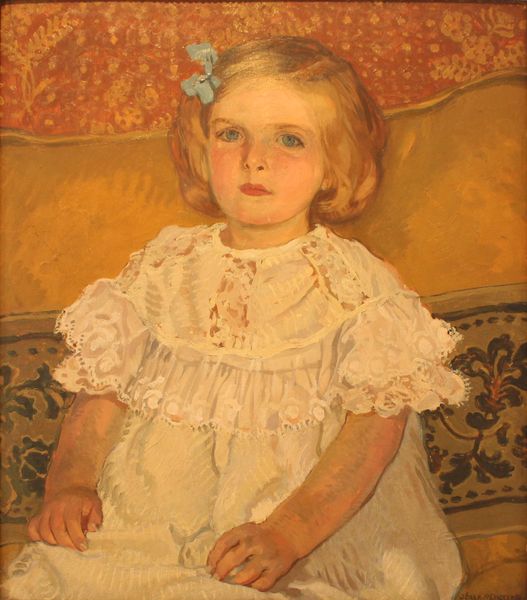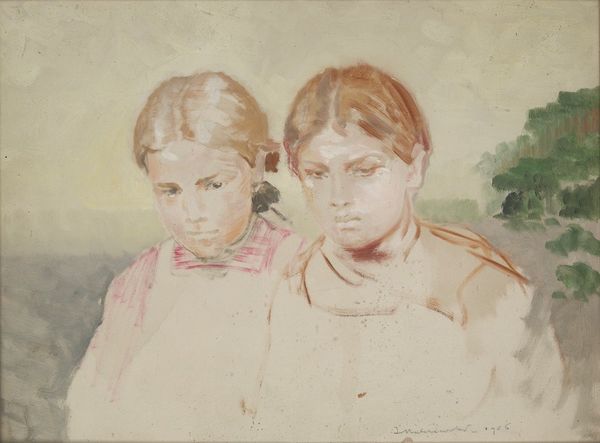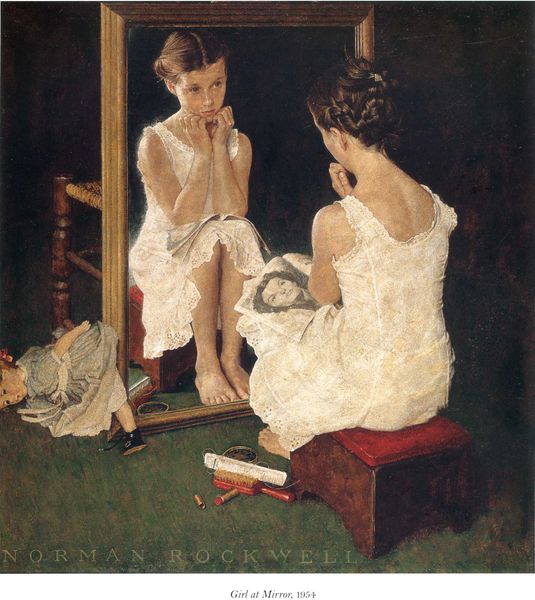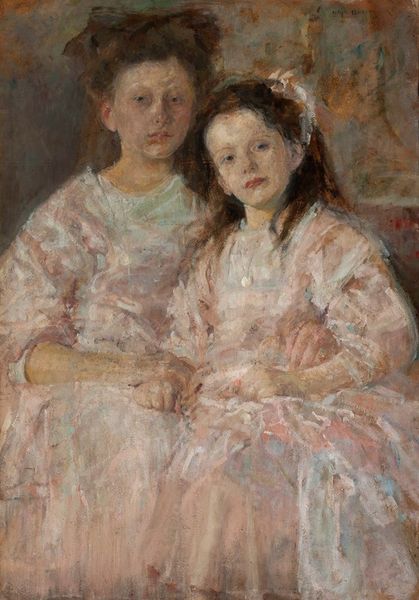
Copyright: Public Domain: Artvee
Curator: This is Albert Edelfelt’s 1881 painting, "The Grand Dukes Boris and Kirill Vladimirovich as Children". The painting, executed in oil paint, captures a genre scene within the confines of what seems to be a solarium. Editor: It feels…overwhelmingly melancholic. Despite the light palette and the youthful subjects, there’s a distinct sense of somber stillness. Is it the muted color story, or perhaps something about their unsmiling countenances? Curator: It is interesting you note the stillness; the composition places both boys within the context of upper class domesticity – evidenced through the lush vegetation, a seemingly staged collection of textiles, and portraiture – their inactivity may, in fact, be quite performative. Their immobility serves a compositional function. Editor: Do you see it as entirely constructed though? Aren’t they also imprisoned by the image and their place in the Romanov dynasty, already tasked with their roles? Curator: That’s a valid reading considering their position and the looming shadows of political responsibilities. Edelfelt however positions them at a vanishing point of childhood's ephemerality using texture and surface, and these function in a much more lasting capacity. Look how the brushwork animates the foliage compared with their stiff, corseted postures. Note how this surface activates your perceptions irrespective of the representational narrative you imposed. Editor: You believe these children were divorced from the political realities of Tsarist Russia, which soon propelled them toward an autocratic future? Look closer, Formalist! Edelfelt strategically arranged these symbols of power with very clear political motivations—the textile covering hints at the weight and constraints of social decorum imposed upon them by virtue of being the Tsar’s kin! Curator: You and your conspiracy theories. If Edelfelt’s aim was to produce an overt critique, wouldn’t we see the composition reflect such ideological tension? I posit that you can derive something even deeper through analysis of line, value, and color. The muted tones reflect their childhood innocence, soon to be tarnished. The tension isn’t socio-political. It’s compositional and psychological! Editor: We are seeing how these techniques reflect the context behind this family’s lineage. To view an image objectively without reflecting the context of a moment or place is an act of denial in my book. I would propose that in looking beyond this painting, we understand these boys—whose family history shapes world history. Curator: But is it Art for art's sake, or is this to be some political propaganda? A debate for the ages I guess, now if you’ll excuse me, I think the color saturation is becoming unbearable to ponder! Editor: Touché, Touché. One must remember even the most mundane image in the art world has a sociopolitical voice when seen at different timelines in history.
Comments
No comments
Be the first to comment and join the conversation on the ultimate creative platform.
